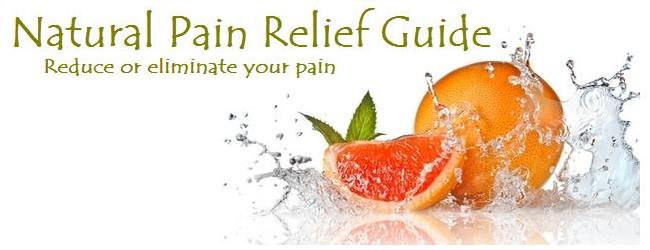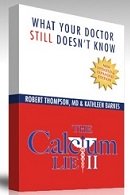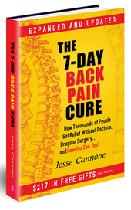|
Side Pain or Side Stitches are a Pain in the Side
Side pain, pain in side or side stitches, also known as "exercise-related transient abdominal pain" (ETAP) is a temporary pain in the side of the lower abdomen that often accompanies exercise.
Of course, one should be aware that there are many other possible sources of pain in the side which should be ruled out. These could include bowel cancer or obstruction, constipation, food poisoning, hernia, kidney stones or just trapped gas.
Causes of Side Pain
- Insufficient oxygen to the diaphragm: (diaphragmatic ischemia) Strenuous exercise such as running uses large amounts of oxygen and, if the diaphragm does not receive enough, it can go into a spasm.
- Breathing unevenly
- Electrolyte imbalance
- Gas trapped in the intestines
- Laughing vigorously
- Oxygen deprivation to the liver: especially if pain is only on the right side
- Jarring during exercise: (especially running) which stretches the ligaments that extend from the diaphragm to the internal organs, especially the liver. Runners tend to exhale every two to four steps. Those who exhale when the right foot hits the ground, are more likely to get side stitches. Exhaling as the right foot hits the ground causes greater forces on the liver (located below the diaphragm on the right side). As the liver is dropping the diaphragm rises for exhalation at the moment of impact thus magnifying the stretching of ligaments that connect the liver and diaphragm.
Treatment
- Bend forward to stretch the diaphragm and ease the pain.
- Breathe deeply with slow, even breaths to stretch the diaphragm. Do not hold your breathe. While, in some cases, that might seem to ease the pain, it only decreases the supply of oxygen to the diaphragm.
- Heat applied to the pained area increases circulation and can relieve side pain. Use a hot pad or Thermotex (contact me for information.)
- Massage or press on the pained area.
- Push up into the right side of your belly and push up to lift the liver slightly.
- Slow your pace or stop until the pain lessens.
- Stretch by raising your right arm straight up and leaning left. Hold for 30 seconds. Switch sides.
If you continue to experience pain, see your health professional.
Prevention
- Breathing: Take even, deep breaths from the diaphragm while running. Shallow breathing from the upper chest increases the risk of a side stitch because the diaphragm is always slightly raised and doesn't lower far enough for the ligaments to relax. The diaphragm becomes stressed and a spasm or "stitch" is more likely to happen.
- Drinking: Drink before exercise because dehydration can increase muscle cramps.
- Electrolytes: Make sure you are getting adequate minerals to match your exercise intensity and duration. Oranges, bananas and other fresh fruits and vegetables are good sources. A very good electrolyte source is AIMPeak Endurance. (Contact me for details).
- Eating: Don't exercise vigorously within two hours after a meal. This is because the body is increasing circulation to the stomach to deal with digestion and less oxygen carrying capacity is available for other needs such as your hard-working diaphragm during exercise. Also, food in your stomach creates more force on the ligaments during a workout.
- Fitness level: As you improve your overall fitness and aerobic capacity you will be less likely to experience side pain.
- Walking: Use a step-breathing pattern that will minimize jarring the liver. Walking on a softer surface may make a difference. Warm up for 5-10 minutes of light activity and gentle stretching to build your heart rate so there will be enough circulation when you increase the intensity. Then cool down after exercise to facilitate removal of waste products (especially lactic acid - a Thermotex can also help with this).
Additional Information
The diaphragm is a concave muscle (much like an overturned bowl when relaxed) that lies below the lungs, separating the thoracic (chest) and abdominal cavities. As it contracts, it flattens increasing the volume of the thoracic cavity and creating a vacuum that draws air into the lungs.
|
Keep up to date with
valuable insights into
pain management via
a healthy lifestyle.
Receive the monthly
Natural Pain Relief
Guide Newsletter.
News articles, health
tips, specials, freebies.
Enter your email and name
in the form to the right.
|
|
|
Check this out!
FREE BOOK
- help for your back, neck or sciatic pain.
NEWLY REVISED!
Great Special
Get it Now!
Finally - Get A Good Night's Sleep
|








New! Comments
Have your say about what you just read! Leave me a comment in the box below.